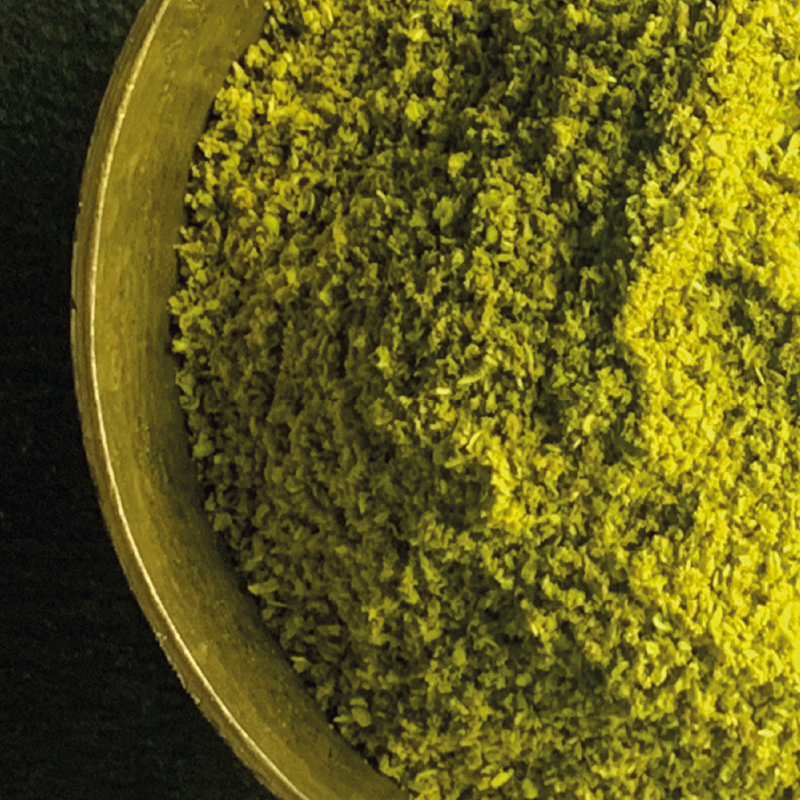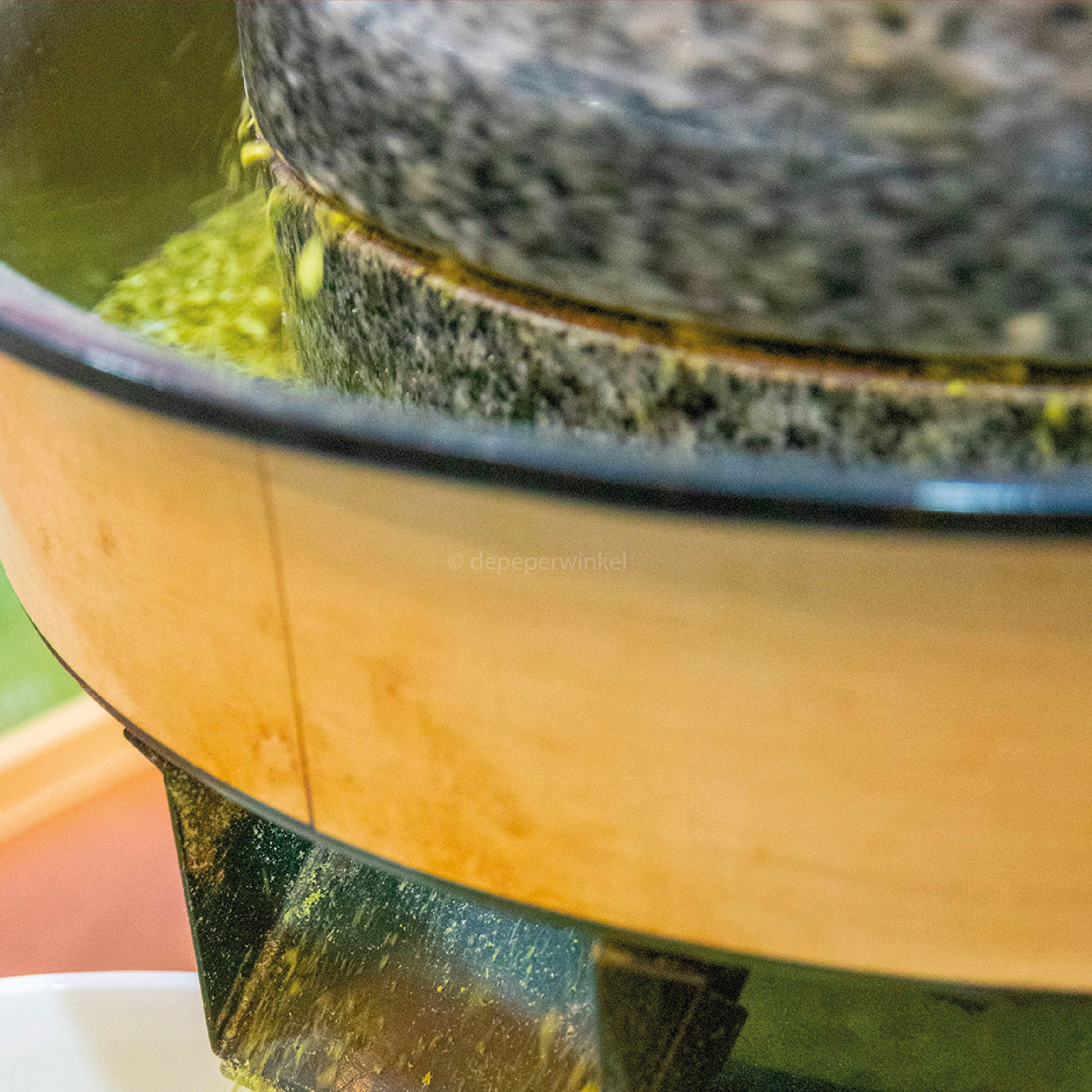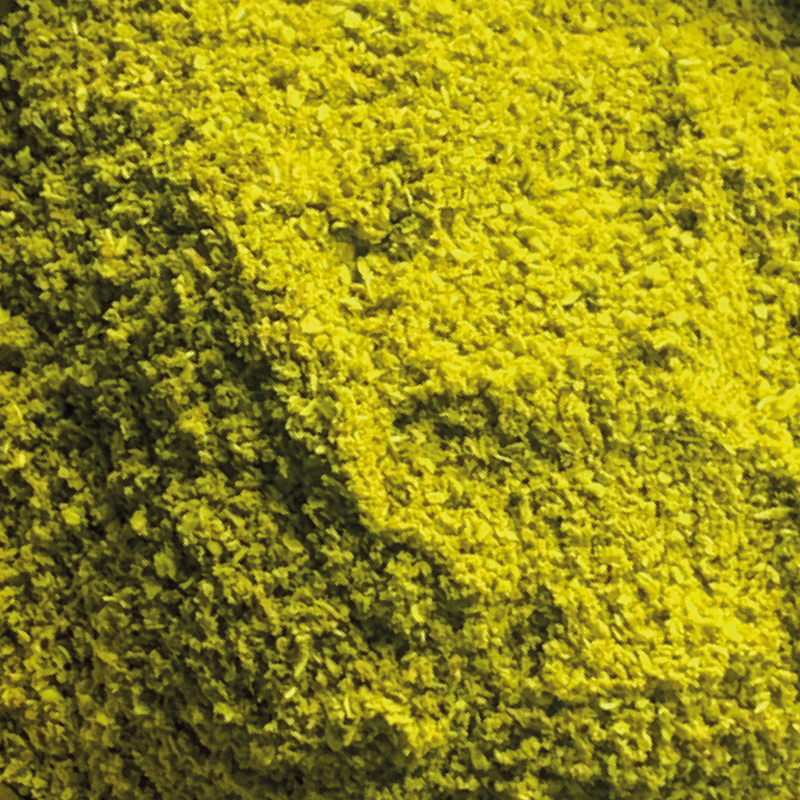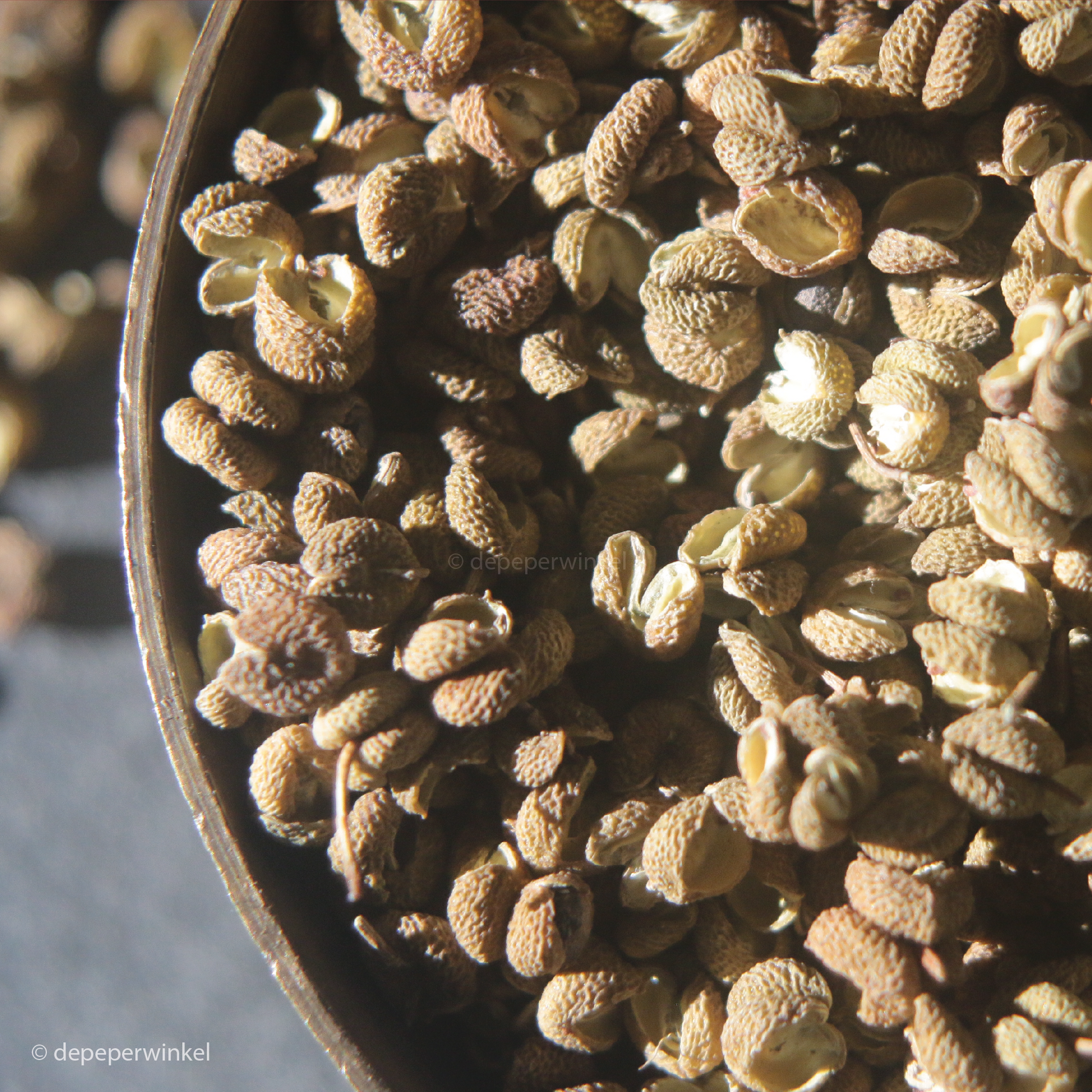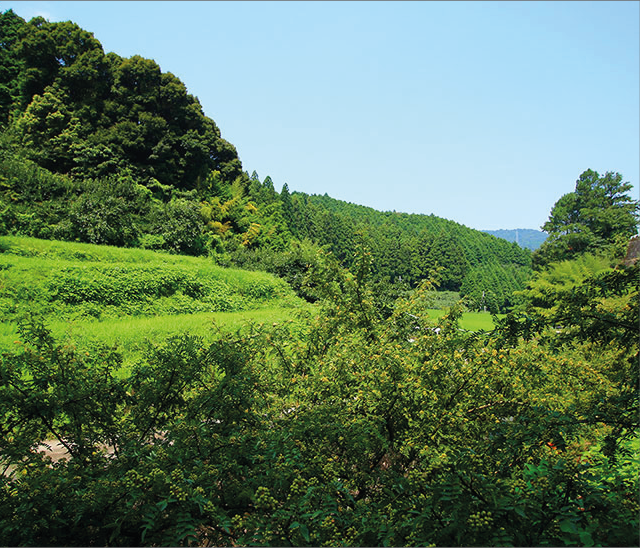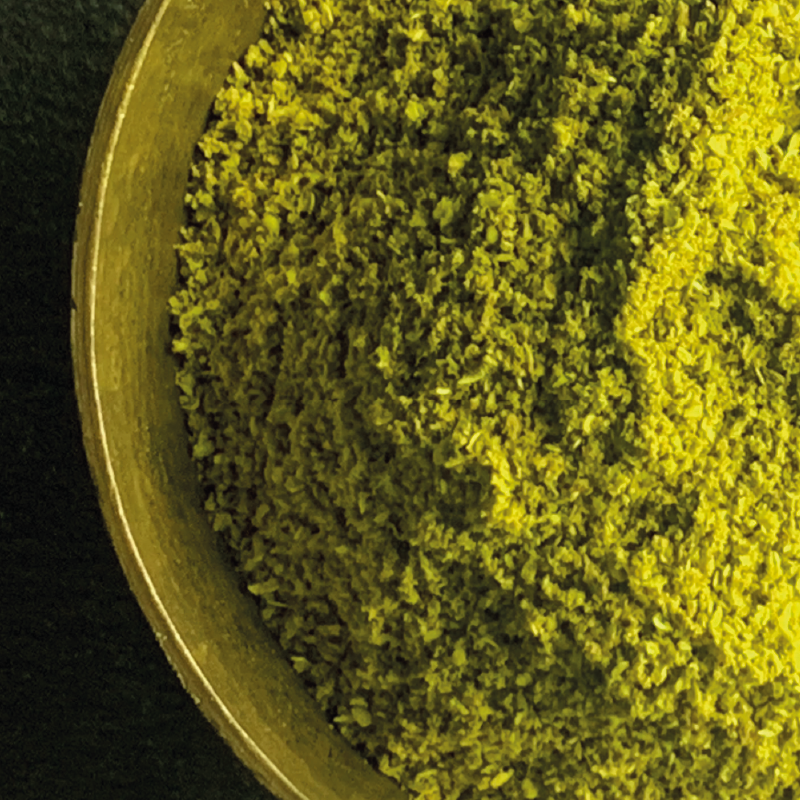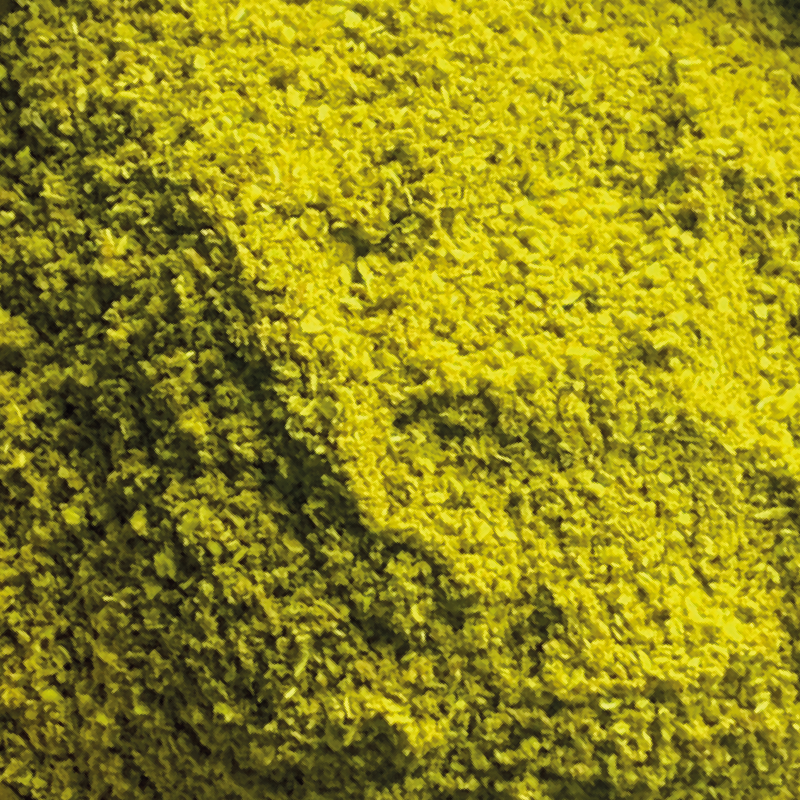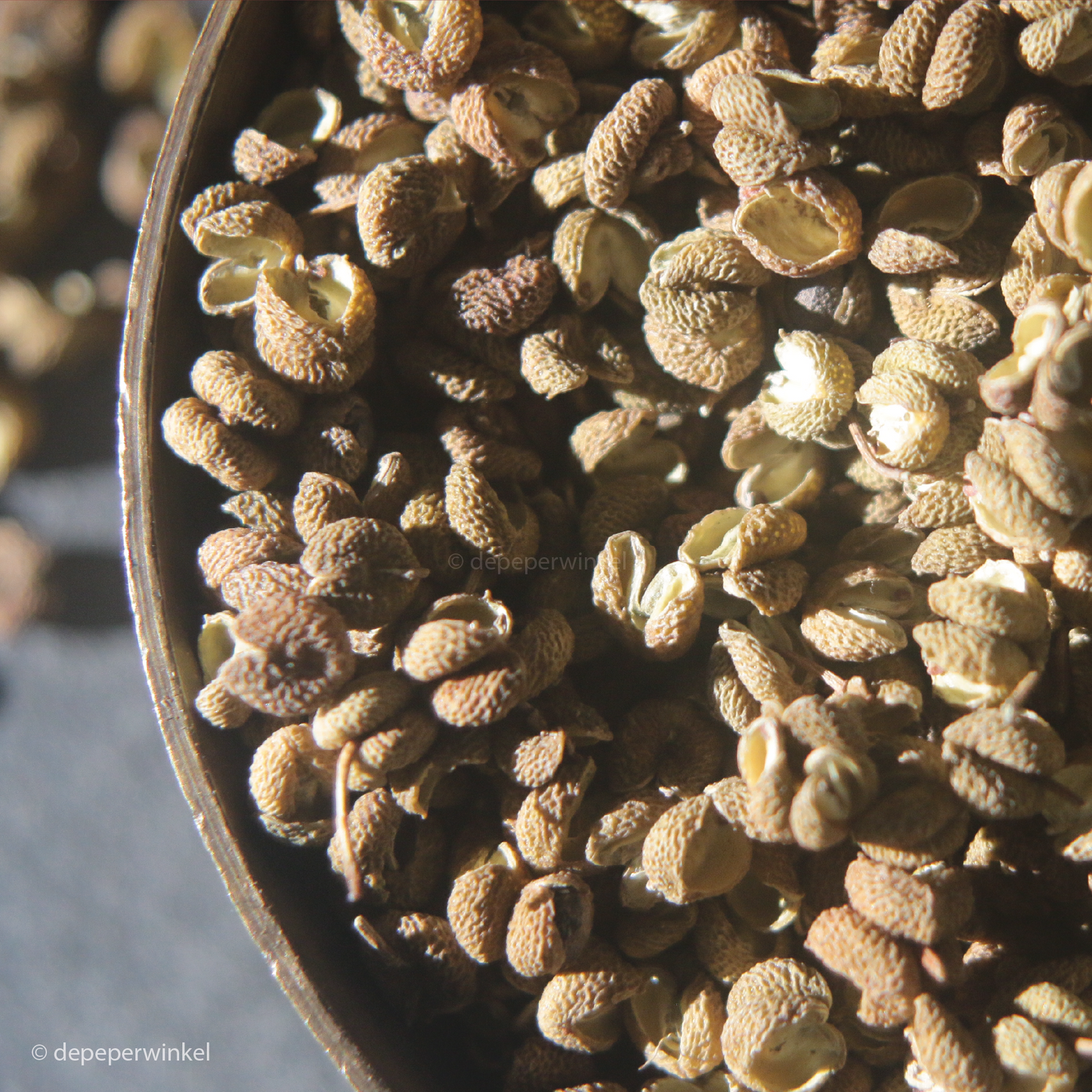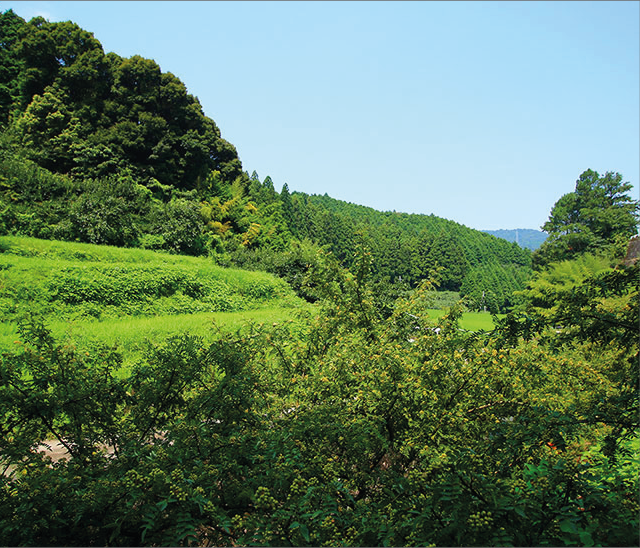depeperwinkel
Sansho powder - Sanshō no kona
Sansho powder - Sanshō no kona
Temporarily out of stock
Unable to load availability for pickup
This finely ground, light green sanshō or sansho pepper - sanshō-no-kona or 七味唐辛子 - is of superior quality. It is ground in the authentic way with the help of a millstone in the family business Kaneichi.
No new supplies from Japan are expected in the short term.
Kaneichi has been producing and processing sanshō, the Japanese pepper, since the end of the nineteenth century. Grinding is traditionally done in successive passes, from coarse to (very) fine.
Sanshō is related to the Chinese Szechuan pepper and the Nepalese timur, but unlike these two brothers or sisters from the Yellowwood genus (Zanthoxylum), the leaves, flowers and shoots of the sanshō tree are also eaten. Incidentally, sanshō means mountain pepper.
Sanshō pepper has been used as a spice for thousands of years, it is believed, although there is no conclusive evidence for this. It was called naruhajika during the Nara era in the 8th century, and used as a medicine to treat diarrhea. It would continue to be used primarily as a medicine for a long time. It was not until the Kamakura era (1185 to 1333 AD) that it was used as a spice again by the samurai, during hunting. Unagi, a dish of freshwater eel with sanshō pepper, dates from that time.
It is now a prominent spice, even one of the few spices in Japanese cuisine. The unripe green berries are called sanshō-no-mi. These are sharper and more aromatic than the red sansho. The first green sanshō's appear on the market from May, the red in October. Sansho powder is therefore made in the summer months.
One of the first preparations with sanshō ever is described in the Okusa cookbook from the 15th century. An eel dish, sprinkled with very finely ground sanshō. Eel in Japan would always be prepared with sanshō or in extreme cases with shichimi tõgarashi (seven-spice powder).
Our sanshō peppers are cultivated - not wild - and come from Wakayama, the beating sanshō heart of Japan since the late 19th century. They are grown by the fourth generation of the family business Kaneichi, founded in 1880 by Yamamoto Katsunosuke, and is considered the best 'house'. Before grinding, the seeds are removed, hence the beautiful green color.
The unique sharpness experience of sanshol
Characteristic of all Zanthoxylum peppers, and therefore also of sanshō, is the tingling sensation you experience on the tip of your tongue due to a substance in the pepper called sanshool, named after the Japanese spice. The pungency is caused by the amides in the peel of the fruit: α-, β-, γ- and δ-sanshool, α hidroxy sanshool and β-hidroxy sanshool. The numbing effect is mainly caused by γ sanshool and α hidroxy sanshool. The amount of α-hidroxy-sanshool in the berries can amount to (well over) 50 ‰ of the dry weight, of γ sanshool around 5‰.
The tingling is accompanied by a slight numbness, jokingly compared to tasting a 9 volt battery. A single berry is enough to experience that! This somatosensation, stimulation by touch, has been used for centuries as an anaesthetic in traditional medicine in Asia. The effect is very complex and the subject of extensive studies. Hydroxy-α-sanshol in particular is said to cause the tingling, and there are certain parallels with the sharpness experience of capsaicin, the sharp substance in chili pepper, but also with menthol and mustard oil.
Smell and taste
Sanshō is a member of the citrus family, which you experience in a scent that is a mixture of grapefruit, lemon, sereh and rosewood. In between you taste and smell - very lightly - mint.Characteristic of all Zanthoxylum peppers, and therefore also of sanshō, is the tingling sensation you experience on the tip of your tongue due to a substance in the pepper called sanshool, named after the Japanese spice.
- linalyl acetate, responsible for a pleasant citrus, bergamot and lavender scent,
- limonene, the scent of lemon peel,
- citral, the scent of grapefruit,
- geraniol, rose scent,
- geranyl acetate, lavender fragrance.
- β-pinene, pine resin, and
- linalool, responsible for the scents of rosewood and coriander
A ripe berry contains considerably more linalool, geraniol and geranyl acetate than a green berry. The aromas develop during ripening,
Combinations
Ground sanshō pepper combines well with citrus (kafir leaf, yuzu or lemongrass), chocolate (dessert), mango and strawberry. Definitely try it with fish tartare, squid, eel of course (unagi) and shellfish (scallops), but also with yakitori (grilled chicken), beef tartare and carpaccio. Do you make your own mayonnaise? Add some sansho powder to it. It will become even richer. Delicious with smoked dishes, from sausages to salmon (danobe), with fried chicken and as a dip for (raw) vegetables. If you don't make your own mayonnaise, try the Japanese Kewpie instead.
Mixed with salt, sanshō no kona is also an excellent seasoning for tempura.
Features:
- 100% unripe fruit of the Zanthoxylum piperitum (sanshō)
- sharpened using millstone
- origin: Wakayama, Japan
Assortment - subject to change -
- available in glass and stand-up pouch
- glass jar contains 60 grams
- stand-up pouches with a capacity of up to 15 to 150 grams
- larger quantities on request
Gift wrapping
- The jar is available in a tasteful gift packaging, consisting of a cube box filled with black tissue paper
- For an overview of our gift packaging, please refer to the gift packaging section
General advice
- sanshō powder is a product for the refined kitchen, can be used both cold and hot in savory and sweet preparations
- definitely do not cook the powder, it loses its wonderful flavor
Save:
- store your sansho powder in a closed container
- preferably store in a dark, dry and cool place
- at least good until June 2024 (06/24)
- This expiration date is an indication
Stock item
Due to serious delivery problems our stock is (almost) exhausted. We are currently waiting for positive news from Japan. If you want to be kept informed, please let us know.
